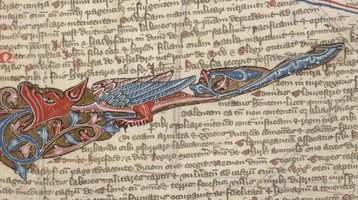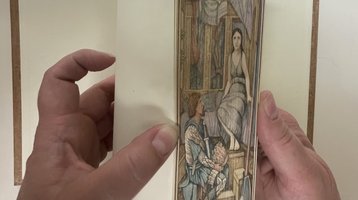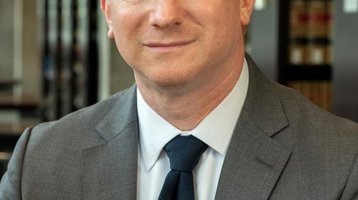Kikù Hibino creates a paradise of sound—for plants
Most musicians make music for other people. Some make music for themselves. One University of Chicago Library staff member recently faced the unique challenge of making music for plants.
“They say plants are smarter than people, so they must hear sounds in very different ways than us,” said Kikù Hibino, a Japanese bibliographic assistant at the Regenstein Library and creator of Fell to Fern, a techno soundscape currently on display in the Fern Room at the Lincoln Park Conservatory.
The exhibition was commissioned by the Experimental Sound Studio as part of Florasonic, a long-term collaboration with the Chicago Park District and the only ongoing sound installation commissioning program in the United States. Hibino—also an established sound artist—tells a story about a bird and a bed of ferns and moss in his first solo exhibition, which is free and open to the public through Sept. 25.
Intersection of art and literature
As a Japanese bibliographic assistant at the Regenstein Library, Hibino supports about 2,000 to 3,000 Japanese titles each year, editing their catalog records, assigning barcodes, and performing other important tasks. Hibino finds inspiration in the poetry, art writings, and novels that come across his desk.
“(The library materials) definitely influence my sound-making,” Hibino said. “Like all other human acts, having new and creative ideas plays an important role in my art practice, and to me, these are mostly language-based.”
Hibino was interested in music from a very young age, but he didn’t know anything about electronic music until college. At Keio University in Japan where Hibino majored in music composition, computer sound design, and policy management, he saw Marcus Popp and Carsten Nicolai, two experimental sound artists from Berlin, play avant-garde electronic music. That performance was Hibino’s first encounter with electronic music, and it changed his life.
Hibino first came to Chicago in 2002 when his now-wife, Aiko, was a PhD student studying sociology at the University. The move couldn’t have been better timed for Hibino. The city was becoming well-known for experimental electronic music—also known as “post-rock”—and Hibino, who was excited to be immersed in it, was beginning to get his start as a sound artist. He was designing sound for a project with Imaginative.Inc, a design firm in Tokyo. Hibino took inspiration from the Chicago artists and curators known for their conceptual art to shape his own style. Fell the Fern is Hibino’s way of saying thank you to them.
Inspiration for Fell to Fern
When creating his installation for the Fern Room, Hibino thought about how ferns and moss—some of the oldest plants on earth—would respond to his music. He also examined the sounds of rain and found they contain wider frequencies than most music. Assuming ferns and moss must love the sound of rain, Hibino built the soundscape on similar frequencies and vibrations, rather than on a progression of musical notes.

Hibino also recalled the memories of his grandparents’ Japanese-style courtyard, covered in ferns and moss, while he was recording the soundscape.
“I began to feel as if ferns and moss were trying to connect across times and places—my grandfather’s old Japanese garden and this fern room in Chicago,” Hibino said.
Fell to Fern tries to capture the warmth of that memory by creating a meditative space for visitors of the Lincoln Park Conservatory. His electronic music, which is made with old Japanese synthesizers, aims to connect with the surrounding nature, complete with buzzing synthesizers that sound like cicadas and twittering birds.
In total, Hibino’s music plays for 20 minutes at the top of every hour in the Fern Room, allowing visitors a chance to get lost in the surrounding greenery.
Timed reservations are required for entry to the Lincoln Park Conservatory, which provides access to Hibino’s soundscape in the Fern Room. Tickets include access to the Conservatory’s three additional display houses: the Palm House, Orchid House, and Show House.
This story was originally published on the University of Chicago Intranet.




